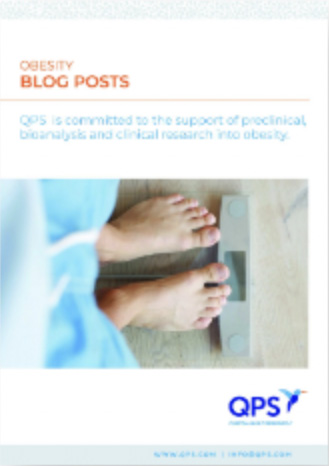At age 29, with unrelenting abdominal pain, Ryan Decembrino pushed past reassurances and demanded answers. A colonoscopy detected a tumor, and surgery and chemotherapy followed. “If I would have waited until my three-year follow-up, I wouldn’t be here today,” he says. Now he’s blunt about the stakes: “We have to get the word out,” and “Cancer can happen to anyone.”
Cancer still skews older, but early-onset cases, defined as those diagnosed between the ages of 18 and 45, have climbed for three decades across many countries. One global analysis charted a sharp rise between 1990 and 2019. Another reported steady upswings across 17 cancers in the U.S., with striking increases in small intestine and pancreatic cancers. Millennials and Gen Z may carry elevated risks as they age, “potentially slowing decades of progress against cancer,” said Hyuna Sung, a cancer epidemiologist at the American Cancer Society. In practice, Cleveland Clinic oncologist Alok Khorana sees the trend first-hand: “It’s a question we’re all asking,” he says. “Why are we seeing more and more younger people in our clinics, and why are they … presenting [cancers] at more advanced stages?”

No Single Culprit—More Likely a Web
Better detection doesn’t fully explain the surge. Researchers are investigating shifts that accelerated in the 1990s, including dietary patterns, rising obesity, widespread antibiotic use, chemical exposures and the omnipresence of microplastics and per- and polyfluoroalkyl substances (PFAS). Yet the data stubbornly resist a tidy answer. It “makes you think that it’s probably a combination of a number of different factors,” said gastroenterologist Sonia Kupfer. Obesity likely contributes to some cancers, but results are mixed for early-onset colorectal cancer. Diets characterized by a high intake of ultraprocessed foods, red meat, sugar, and fried foods have been linked to a higher risk, while a plant-forward eating pattern appears protective. Still, as Khorana notes, teasing out the diet’s role is difficult because “there are too many factors to capture in studies.”
PFAS, Plastics and the Modern Milieu
PFAS appear in water, packaging and textiles and are thought to be tied to cancers, Sung says, though their precise role in early-onset trends remains unsettled. Microplastics, which have increased in abundance alongside global plastic production, are accumulating throughout the body and in tumors. Evidence of harm is not conclusive, but laboratory hints of inflammation—and its well-known link to cancer—keep the spotlight on these particles. The unknowns here are vast; the signals are worrying.
The Gut: Where Early Clues Are Mounting
Colorectal cancer now leads cancer deaths in American men under 50 and ranks second for women, according to the American Cancer Society. The gut microbiome is a prime suspect in the shift. Research reported in Nature traced a distinct mutational pattern—more common in early-onset tumors—to childhood exposure to a bacterial toxin called colibactin. “These mutation patterns are a kind of historical record in the genome, and they point to early life exposure to colibactin as a driving force behind early onset disease,” said computational biologist Ludmil Alexandrov. Molecular geneticist Alberto Bardelli calls it a “beautiful correlation,” while emphasizing that colibactin probably explains only a slice of cases. Diet, immunity and microbe–host interactions may set the stage for certain bacteria to thrive and damage DNA years before diagnosis.
Faster-Growing Tumors, Slower Diagnoses
Younger adults are often diagnosed late—sometimes because tumors grow faster, sometimes because symptoms are waved off. Bardelli suspects some early-onset colorectal cancers evolve on a compressed timeline, potentially overwhelming current screening guidelines. Kupfer calls efforts to flag high-risk individuals early “aspirational,” given the incomplete understanding of biology and the shaky nature of risk scoring. The human toll shows up in surveys: “Thirty-six percent of patients saw three or more doctors before receiving a diagnosis of colorectal cancer,” said Michael Sapienza of the nonprofit Colorectal Cancer Alliance.
What to Do Now: Vigilance, Vaccination and Screening
There’s no magic shield for people under 50. Vaccination against human papillomavirus can reduce the risk of cervical and throat cancer, and the hepatitis B vaccine may help prevent liver cancer. Beyond that, the basics of cancer prevention are lifestyle-related: diet quality, exercise, limiting alcohol, avoiding tobacco and using sunscreen.
Awareness helps, too. Following the launch of the Colorectal Cancer Alliance’s “Lead From Behind” campaign, colonoscopy bookings increased by 36%. Many Americans don’t realize polyp removal can prevent cancer; “If they knew this, 98% reported they would be more likely to undergo the screening,” Sapienza said. Lowering the colorectal screening age to 45 in the US, as recommended by the American Cancer Society in 2018, may help catch more cases earlier.
The path forward is clear: listen to symptoms, push for answers, expand smart screening, and continue to decode the causes. With vigilance and science moving in tandem, a generation at risk can bend the curve back toward health.
Did you enjoy this blog post? Check out our other blog posts as well as related topics on our Webinar page.
QPS is a GLP- and GCP-compliant contract research organization (CRO) delivering the highest grade of discovery, preclinical, and clinical drug research development services. Since 1995, it has grown from a tiny bioanalysis shop to a full-service CRO with 1,200+ employees in the US, Europe, Asia, India and Australia. Today, QPS offers expanded pharmaceutical contract R&D services with special expertise in pharmacology, DMPK, toxicology, bioanalysis, translational medicine, cell therapy (including PBMCs, leukopaks and cell therapy products), clinical trial units and clinical research services. An award-winning leader focused on bioanalytics and clinical trials, QPS is known for proven quality standards, technical expertise, a flexible approach to research, client satisfaction and turnkey laboratories and facilities. Through continual enhancements in capacities and resources, QPS stands tall in its commitment to delivering superior quality, skilled performance and trusted service to its valued customers. For more information, visit www.qps.com or email info@qps.com.




